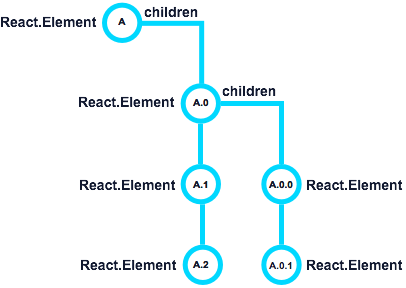Using shouldComponentUpdate()
The next method in the Update life cycle is shouldComponentUpdate(). This method allows your Component to exit the Update life cycle if there is no reason to apply a new render. Out of the box, the shouldComponentUpdate() is a no-op that returns true. This means every time we start an Update in a Component, we will re-render.
If you recall, React does not deeply compare props by default. When props or state is updated React assumes we need to re-render the content. But, if the props or state have not changed, should we really be re-rendering?
Preventing unnecessary renders
The shouldComponentUpdate() method is the first real life cycle optimization method that we can leverage in React. We can look at our current and new props & state and make a choice if we should move on. React's PureRenderMixin does exactly this. It checks the current props and state, compares it to the next props and state and then returns true if they are different, or false if they are the same.
/**
* Performs equality by iterating through keys on an object and returning false
* when any key has values which are not strictly equal between the arguments.
* Returns true when the values of all keys are strictly equal.
*/
function shallowEqual(objA: mixed, objB: mixed): boolean {
if (objA === objB) {
return true;
}
if (typeof objA !== 'object' || objA === null ||
typeof objB !== 'object' || objB === null) {
return false;
}
var keysA = Object.keys(objA);
var keysB = Object.keys(objB);
if (keysA.length !== keysB.length) {
return false;
}
// Test for A's keys different from B.
var bHasOwnProperty = hasOwnProperty.bind(objB);
for (var i = 0; i < keysA.length; i++) {
if (!bHasOwnProperty(keysA[i]) || objA[keysA[i]] !== objB[keysA[i]]) {
return false;
}
}
return true;
}
function shallowCompare(instance, nextProps, nextState) {
return (
!shallowEqual(instance.props, nextProps) ||
!shallowEqual(instance.state, nextState)
);
}
var ReactComponentWithPureRenderMixin = {
shouldComponentUpdate: function(nextProps, nextState) {
return shallowCompare(this, nextProps, nextState);
},
};
The above code is extracted from the React addon/source1. The mixin defines the shouldComponentUpdate(nextProps, nextState) and compares the instance's props against the nextProp and the state against the nextState.
Mutability and pure methods
It is important to note that the shallowCompare method simply uses === to check each instance. This is why the React team calls the mixin pure, because it will not properly check against mutable data.
Let's think back to our data props Array example where we use push() to add a new piece of data onto the Array.
// psuedo code
this.setState({ data: [1, 2, 3] });
<MyComponent data={ this.state.data } />
The shallowCompare will see the current props.data as the same instance as the nextProps.data (props.data === nextProps.data) and therefore not render an update. Since we mutated the data Array, our code is not considered to be pure.
This is why systems like Redux requires pure methods for reducers. If you need to change nested data you have to clone the objects and make sure a new instance is always returned. This allows for shallowCompare() to see the change and update the component.
Other ways to handle this is to use an immutable data system, such as Immutable.js. These data structures prevent developers from accidentally mutating data. By enforcing immutable data structures, we can leverage shouldComponentUpdate() and have it verify that our props and state have changed2.
Stop renders at the source
If you recall our nested Component structure:

By default, if an Update is triggered in A, then all the other children will also go through their updates. This can easily cause a performance issue, because now we have many Components going through each step of the process.
By adding logic checks in shouldComponentUpdate() at A we can prevent all its children from re-rendering. This can improve overall performance significantly. But keep in mind, if you prevent A from passing props down to the children you may prevent required renders from occurring.
Jump ahead with forceUpdate()
Like componentWillReceiveProps(), we can skip shouldComponentUpdate() by calling forceUpdate() in the Component. This sets a flag on the Component when it gets added to the dirty queue. When flagged, shouldComponentUpdate() is ignored. Because we are forcing an update we are stating something has changed and the Component must re-render.
Since forceUpdate() is a brute force method, it should always be used with caution and careful consideration. You can easily get into an endless render loop if you keep triggering forceUpdate over and over. Troubleshooting infinite render loops can be very tricky. So, when reaching for forceUpdate keep all this in mind.
Next Up: Tapping into componentWillUpdate()
1 Captured from React 15.0.1
2 If you use Immutable.js, there is a ImmutableRenderMixin library that provides both Object shallow compare and Immutable data comparison.